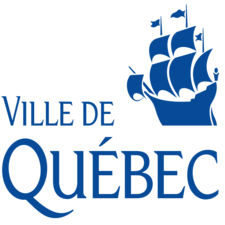Agricultural
Type of resources
Topics
Keywords
Contact for the resource
Provided by
Formats
Representation types
Update frequencies
status
-

Territory protected for agricultural purposes by the Government of Quebec.**This third party metadata element was translated using an automated translation tool (Amazon Translate).**
-

***** This project was carried out by Environment and Climate Change Canada in collaboration with the MDDELCC as part of the St. Lawrence Action Plan (PASL). Since 1988, the governments of Canada and Quebec have worked together to conserve and enhance the St. Lawrence River as part of the St. Lawrence Action Plan (PASL). One of the projects identified under the theme of biodiversity conservation is the development of an integrated plan for the conservation of natural environments and biodiversity in the St. Lawrence. Identifying priority natural environments for the conservation of biodiversity was the first step in this planning exercise. However, planning for the conservation of natural environments requires having a fair, reliable, accurate and current image of the spatial distribution of ecosystems in the study area. In order to produce an Atlas of territories of interest for conservation in the St. Lawrence Lowlands, an updated mapping of land use in this vast territory was therefore undertaken. This project required the obtaining of reliable information on the natural environments of the St. Lawrence Lowlands. Although numerous and excellent cartographic products already exist to delimit different types of environments, they often cover well-circumscribed regions and it was therefore particularly important to obtain a homogeneous product throughout the territory. At the same time, this makes it possible to obtain the best information on its various components: Agricultural, aquatic, anthropogenic, wooded, humid environments as well as wastelands and bare soils. The mapping of land use in the St. Lawrence Lowlands is thus mainly based on grouping and improving the best existing products for each of the themes.**This third party metadata element was translated using an automated translation tool (Amazon Translate).**
-

Mapping of agricultural production zoning in the urban planning code (CDU) on the territory of Laval.**This third party metadata element was translated using an automated translation tool (Amazon Translate).**
-

This habitat quality model shows the probability of the presence of short-eared owls in southern Quebec during the nesting season. It is based on species presence data and a modeling of several environmental variables of interest to the species during the nesting period. The model is based on 64 ha analysis units, i.e. cells with a side length of 800 meters. For more details, for example on the study area, the data used and the modeling carried out, consult the following report [“Habitat quality model for the short-eared owl (Asio flammeus) in southern Quebec”] (https://cdn-contenu.quebec.ca/cdn-contenu/faune/documents/habitats/modele-qualite-habitat-hibou-marais.pdf). ### What is an MQH? A habitat quality model (HQM) is a “rough representation” of the preferred habitat of a wildlife species. For general information, see the [“Habitat Quality Assessment”] page (https://www.quebec.ca/agriculture-environnement-et-ressources-naturelles/faune/gestion-faune-habitats-fauniques/habitats-fauniques/evaluation-qualite-habitats). ### WARNING The MQH was developed primarily in order to determine the sectors with the best potential to shelter the target species, in order to prioritize inventories. The models developed have limitations and therefore cannot be used to confirm the absence of a species at a given location. Consult the [“The benefits and limitations of habitat quality models”] section (https://www.quebec.ca/agriculture-environnement-et-ressources-naturelles/faune/gestion-faune-habitats-fauniques/habitats-fauniques/evaluation-qualite-habitats#c159177) on the “Habitat Quality Assessment” page for general information or the [report] (https://cdn-contenu.quebec.ca/cdn-contenu/faune/documents/habitats/RA_modele-qualite-habitat_hibou_marais.pdf) for information specific to the short-eared owl MQH.**This third party metadata element was translated using an automated translation tool (Amazon Translate).**
-

This thematic layer shows the location of the wells sampled for pesticides in the context of various studies carried out near certain target crop environments between 1999 and 2024. The data comes from an extraction from the BQMA and, when a report is available on the Department's website, the reader can access it from a link in the information window. Private well sampling stations are grouped by watershed in order to comply with sections 53 and 54 of the Act on access to documents held by public bodies and on the protection of personal information.**This third party metadata element was translated using an automated translation tool (Amazon Translate).**
-

This thematic layer shows the location of pesticide stations in surface water monitored as part of various studies. The data comes from an extraction from the BQMA and, when a report is available on the Department's website, the reader can access it from a link in the information window. The dataset on the monitoring of pesticides in surface water also includes a layer of sampling stations, a layer of polygons presenting the drainage areas of some of the stations and finally, a data table including the compilation of land use by year for each of these drainage areas. The drainage areas and the land use table are linked to the sampling stations based on the BQMA station number.**This third party metadata element was translated using an automated translation tool (Amazon Translate).**
-

High-resolution relief data produced from LiDAR surveys and limited to crop plots are particularly useful in the agricultural sector since they make it possible to model surface drainage in order to identify drainage problems or the risks of soil erosion. Agronomic interpretation will take advantage of this information not only in the form of the numerical terrain model and the shading, but also with the level curves, flow paths and basins located inside the cultivated plots, as delimited by the database of declared agricultural plots and productions (BDPPAD) of the Financière Agricole du Québec (FADQ). Level curves of 1 m covering the entire treated territory excluding cultivated plots (agricultural, forest, urban, etc.) are also available. These new data are the result of a collaboration between the MRNF and the MAPAQ, and they are offered thanks to the open valorization of data initially derived from LiDAR to the MRNF Forest Inventory Directorate (DIF). We hope that this data will support better soil and water management interventions, in order to mitigate the consequences of climate change, and to promote sustainable agriculture.**This third party metadata element was translated using an automated translation tool (Amazon Translate).**
 Arctic SDI catalogue
Arctic SDI catalogue